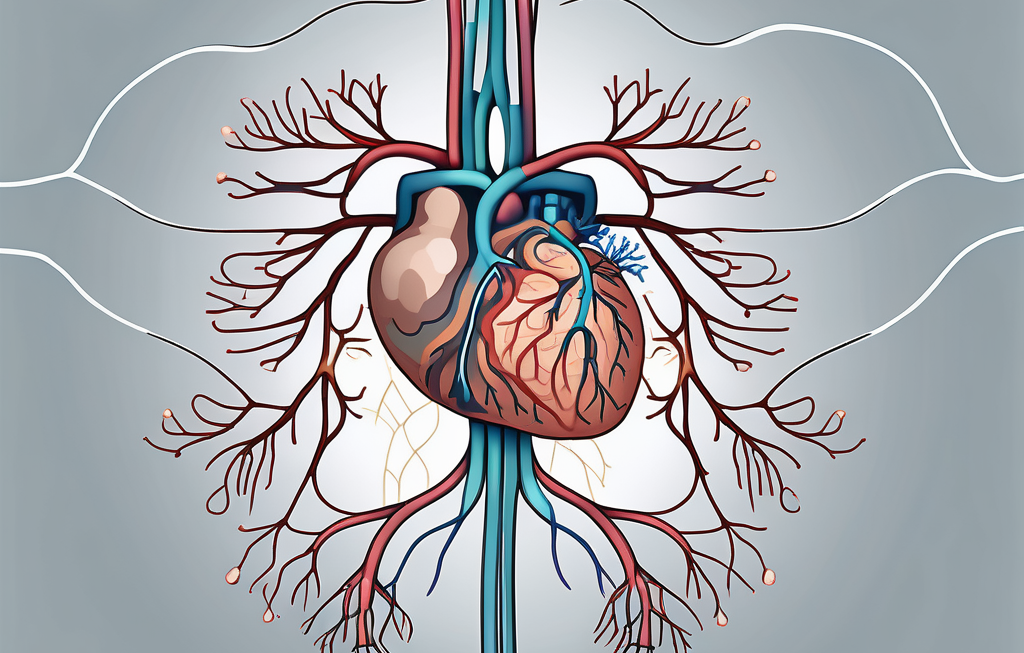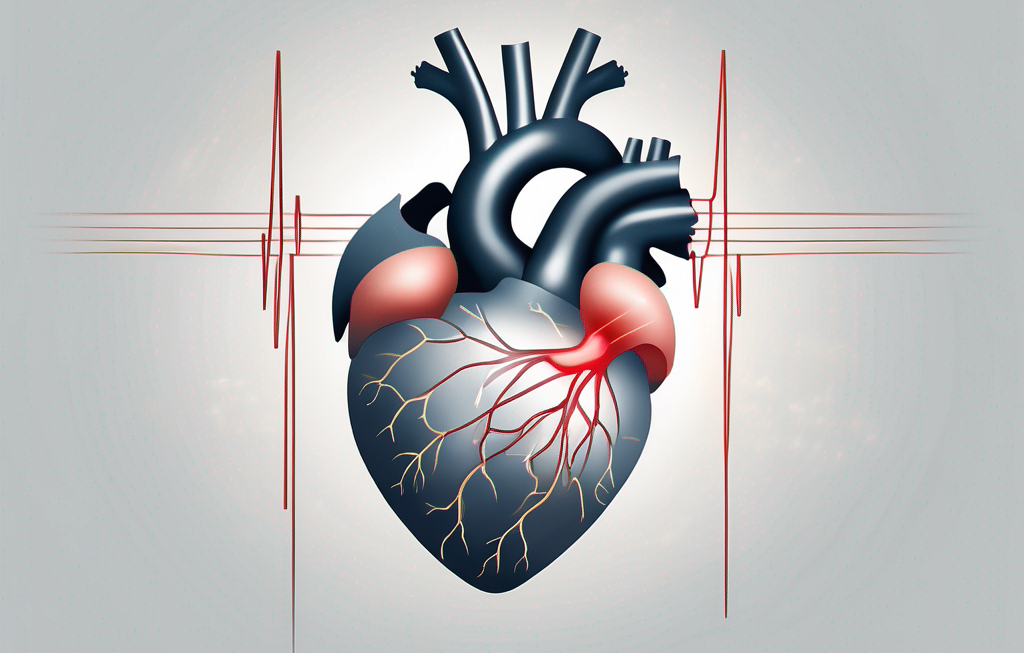The vagal nerve stimulator is a medical device that has been gaining attention for its potential to aid in the management of various health conditions. In this article, we will explore the different aspects related to the duration of vagal nerve stimulation, including the understanding of how it works, the process of the stimulation, and what to expect post-stimulation.
Understanding the Vagal Nerve Stimulator
The vagal nerve stimulator, also known as VNS, is a small electronic device that is implanted beneath the skin in the upper chest. This device is connected to the vagus nerve, a long nerve that runs through the body and plays a vital role in regulating various bodily functions.
Patients who undergo vagal nerve stimulation may experience improvements in not only their physical health but also their mental well-being. The VNS has been used in the treatment of epilepsy, depression, and even chronic pain. By targeting the vagus nerve, which is intricately linked to the brain and various organs, the VNS offers a unique approach to managing these conditions.
The Role of the Vagal Nerve in the Body
The vagus nerve, also known as the tenth cranial nerve, is responsible for controlling critical functions such as heart rate, digestion, breathing, and mood regulation. By stimulating the vagus nerve, the vagal nerve stimulator aims to modulate these bodily functions and potentially alleviate certain health conditions.
Furthermore, the vagus nerve is a key player in the body’s parasympathetic nervous system, often referred to as the “rest and digest” system. This system helps the body relax, conserve energy, and promote digestion. By influencing the vagus nerve, the VNS can indirectly impact a wide range of bodily processes beyond those directly related to the nerve itself.
The Science Behind Vagal Nerve Stimulation
The precise mechanism of how vagal nerve stimulation works is not fully understood. However, research suggests that the electrical impulses delivered by the device can affect the levels of neurotransmitters in the brain, such as serotonin and norepinephrine. These chemical messengers play a role in mood regulation and possibly contribute to the therapeutic effects of VNS.
Moreover, studies have shown that vagal nerve stimulation can also influence inflammation in the body. Inflammation is a key factor in various chronic conditions, including autoimmune disorders and depression. By modulating the body’s inflammatory response through VNS, researchers are exploring new avenues for treating these complex health issues.
The Process of Vagal Nerve Stimulation
Before undergoing vagal nerve stimulation, it is essential to be prepared and informed about the procedure itself.
Vagal nerve stimulation is a treatment method that involves the use of a device to send electrical signals to the vagus nerve, which plays a crucial role in regulating various bodily functions. This therapy is commonly used in the management of epilepsy, depression, and other neurological disorders.
Preparing for Vagal Nerve Stimulation
Prior to the implantation, thorough discussions with your healthcare provider will take place. These conversations will focus on understanding your medical history, evaluating potential risks and benefits, and considering alternative treatment options. It is crucial to have realistic expectations and an understanding of the potential outcomes.
Furthermore, pre-operative tests such as imaging studies and blood work may be conducted to ensure that you are a suitable candidate for vagal nerve stimulation. Your healthcare team will provide detailed instructions on pre-operative care, including guidelines on medication management and fasting requirements.
What Happens During the Procedure
The actual implantation procedure is typically performed under general anesthesia. During the surgery, a small incision is made in the upper chest area, and the vagal nerve stimulator is placed beneath the skin. Electrical leads are then attached to the vagus nerve, providing the necessary connection for stimulation.
Once the device is implanted, programming sessions will be scheduled to adjust the settings of the stimulator based on your individual response and symptom control. Regular follow-up appointments with your healthcare provider are essential to monitor the effectiveness of vagal nerve stimulation and make any necessary modifications to optimize its benefits.
Duration of Vagal Nerve Stimulation
When it comes to the duration of vagal nerve stimulation, several factors come into play.
Vagal nerve stimulation is a therapeutic approach that involves the delivery of electrical impulses to the vagus nerve, a key player in the body’s parasympathetic nervous system. This method has been utilized in the treatment of various conditions, including epilepsy, depression, and even certain inflammatory disorders. The stimulation works by modulating neural pathways and influencing neurotransmitter release, ultimately aiming to restore balance in the body’s physiological processes.
Factors Affecting Stimulation Duration
The duration and frequency of vagal nerve stimulation can vary depending on the specific condition being treated and the patient’s response to the therapy. Healthcare providers will often work closely with patients to determine the optimal settings for each individual case.
Furthermore, the intensity of the electrical impulses, the location of the stimulation, and the overall treatment goals all play a role in determining the duration of each session. It is crucial for healthcare professionals to carefully assess these factors to tailor the stimulation protocol to the unique needs of each patient.
Typical Length of Vagal Nerve Stimulation Sessions
During vagal nerve stimulation, electrical impulses are delivered to the vagus nerve at regular intervals. These stimulation sessions typically last several seconds and are programmed to occur at pre-determined intervals throughout the day. The specific duration and frequency will be determined by your healthcare provider based on your individual needs and response.
Patients undergoing vagal nerve stimulation may experience a range of sensations during the sessions, such as a tingling or pulsating feeling in the neck area where the device is implanted. These sensations are normal and are often well-tolerated by individuals receiving the therapy. It is essential for patients to communicate any discomfort or concerns to their healthcare team to ensure the best possible outcome from the treatment.
Post-Stimulation Expectations
After undergoing vagal nerve stimulation, it is essential to have a clear understanding of what you may experience. Vagal nerve stimulation is a medical procedure that involves the implantation of a device that delivers electrical impulses to the vagus nerve, which plays a key role in regulating various bodily functions, including heart rate, digestion, and mood.
During the procedure, a small incision is made in the chest area to implant the device, which is connected to the vagus nerve in the neck. Once the device is in place, it can be programmed to deliver electrical impulses at regular intervals to help regulate nerve activity and potentially improve symptoms of certain medical conditions.
Immediate Aftereffects of Vagal Nerve Stimulation
Following each stimulation session, some individuals may experience mild side effects such as a tingling sensation in the neck, changes in voice or speech, coughing, or temporary hoarseness. These side effects are generally well-tolerated and tend to resolve on their own over time. It is important to communicate any persistent or concerning side effects to your healthcare provider for further evaluation and management.
In addition to the physical side effects, some individuals may also experience emotional or psychological responses to vagal nerve stimulation. These can include feelings of fatigue, changes in mood, or alterations in sleep patterns. It is important to monitor these aspects of your well-being and discuss any concerns with your healthcare team.
Long-Term Effects and Benefits
The individual response to vagal nerve stimulation can vary. While some individuals may experience significant improvements in their health condition over time, others may see more modest benefits. It is important to note that the full effects of VNS may not be immediately apparent and may require continued therapy and monitoring. Your healthcare provider will work closely with you to assess the effectiveness of the treatment and make any necessary adjustments to optimize outcomes.
Furthermore, ongoing research is being conducted to explore the potential benefits of vagal nerve stimulation for a variety of medical conditions, including epilepsy, depression, and chronic pain. As our understanding of the nervous system and its interactions with various bodily functions continues to evolve, new applications for VNS may emerge, offering hope for improved treatment options for individuals facing challenging health conditions.
Frequently Asked Questions about Vagal Nerve Stimulation
Here are some common questions and answers regarding vagal nerve stimulation:
Is Vagal Nerve Stimulation Painful?
During the surgical procedure, general anesthesia is used to ensure a painless experience for the patient. The sensation of the electrical impulses delivered during the stimulation sessions is usually not painful, although some individuals may perceive a mild discomfort or sensation.
It is important to note that the level of discomfort experienced during vagal nerve stimulation can vary from person to person. Factors such as individual pain thresholds, the specific condition being treated, and the settings of the stimulator device can all influence the sensation felt during the procedure. Healthcare providers work closely with patients to adjust stimulation parameters and ensure optimal comfort and efficacy.
Can Vagal Nerve Stimulation be Self-Administered?
No, vagal nerve stimulation should always be performed under the guidance of a healthcare professional who has expertise in the procedure. Self-administration can lead to complications and is not recommended.
Due to the precise nature of vagal nerve stimulation and the need for accurate placement of the stimulating device, self-administration by individuals without proper training and experience can pose serious risks. Healthcare professionals undergo specialized training to ensure the safe and effective delivery of vagal nerve stimulation, taking into account individual patient factors and medical history.
In conclusion, the vagal nerve stimulator offers a fascinating approach to potentially managing various health conditions. Understanding the stimulator’s role in modulating the vagus nerve, the process of the stimulation, and the post-stimulation expectations can help individuals make informed decisions and have realistic expectations regarding the duration and potential benefits of vagal nerve stimulation.



